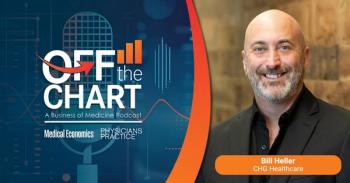
Reducing clinician burnout starts with a fresh look at healthcare technology
Technology can serve a higher purpose in healthcare by enabling clinicians to easily communicate and share information without having to taking time away from patient care.
Editor's Note: Welcome to Medical Economics' blog section which features contributions from members of the medical community. These blogs are an opportunity for bloggers to engage with readers about a topic that is top of mind, whether it is practice management, experiences with patients, the industry, medicine in general, or healthcare reform. The opinions expressed here are that of the authors and not Medical Economics.
When the ECRI Institute named clinician burnout a
Burnout in healthcare is now being called
As a physician and long-time patient advocate for many friends and family members, I continue to examine ways we can mitigate clinician burnout. We need systematic ways to remove unnecessary hassles, eliminate administrative burdens, and reduce levels of stress and cognitive overload for physicians and nurses. We can start by simplifying complex workflows, saving care teams valuable time that can be better spent on providing direct patient care.
There must also be a metric for humanity that
Enable clinicians to return to purpose: The real role of technology
In addition to clinician burnout, ECRI Institute's top 10 patient safety concerns for the year include improper
Just as clinicians have a higher purpose in their work, technology can serve a higher purpose in healthcare, enabling clinicians to easily communicate and share information without having to take their hands and attention away from patient care. The right technology can be a valuable tool that fosters human connections at every point of care. Technology should not be an obstacle; and if co-designed with patients and clinicians, it will not be.
Elevate the voices of clinicians and patients
In medical school and nursing school, clinicians are taught to “tough it out” and not show signs of weakness. Yet, we are all human. We need to acknowledge burnout is a system issue–not an individual one. While discussions about prevention traditionally focus on interventions and solutions at the individual level, we need to redirect our attention and do the hard work of eliminating preventable trauma of complex and fatiguing systems.
To accomplish this task, we must elevate the voices of clinicians and engage them and their patients in co-designing the next generation of healthcare technologies. (Had we taken this approach before implementing the EHR, we could have avoided burning out a generation of clinicians.) In the era of voice, we must restore the patient narrative. Voice technology designed to
Fortunately, I am seeing more organizations understand the benefits of giving clinicians and patients a seat at the table of innovation design. Some healthcare technology companies are encouraging product engineers and IT leaders to walk in the shoes of care teams. By listening to physicians, nurses, and patients, and witnessing the humanity in healthcare, these tech-minded professionals are better equipped to develop human-centered innovations that actually improve the lives of patient, families, and care teams.
M. Bridget Duffy, MD, is the chief medical officer of
Newsletter
Stay informed and empowered with Medical Economics enewsletter, delivering expert insights, financial strategies, practice management tips and technology trends — tailored for today’s physicians.








